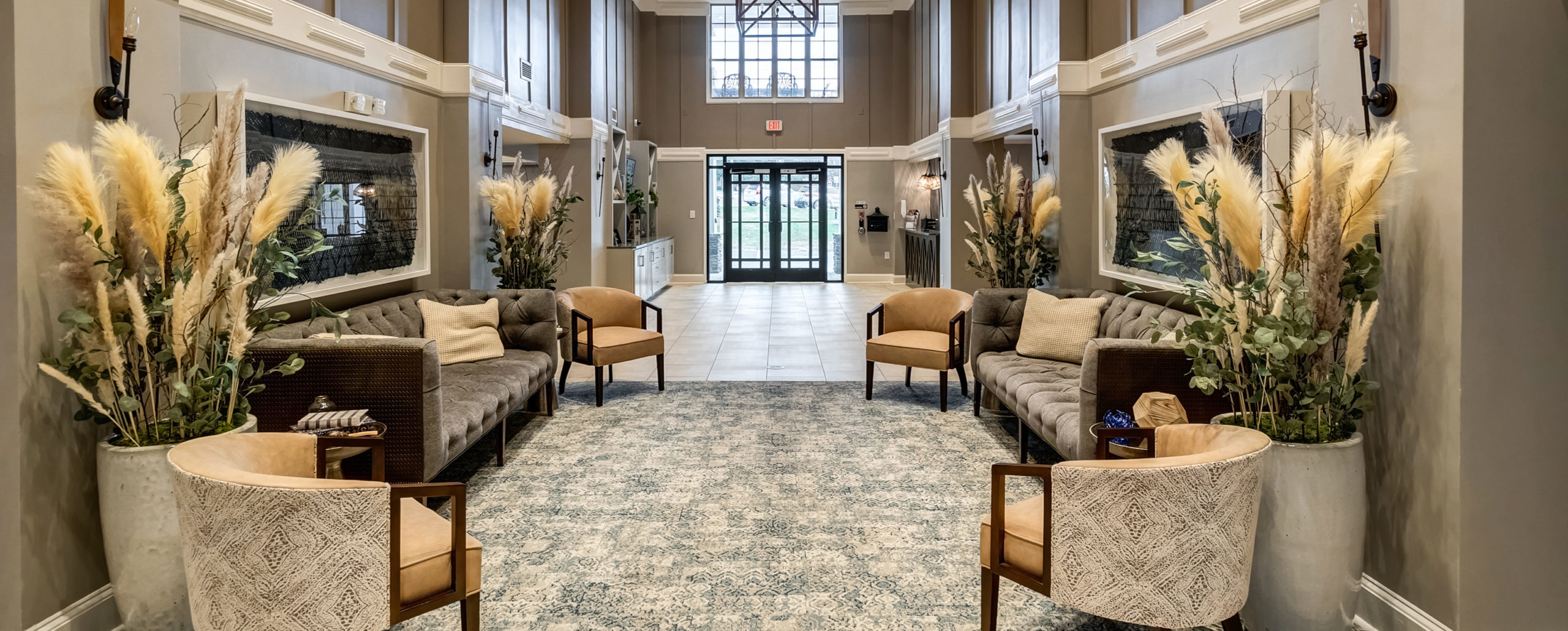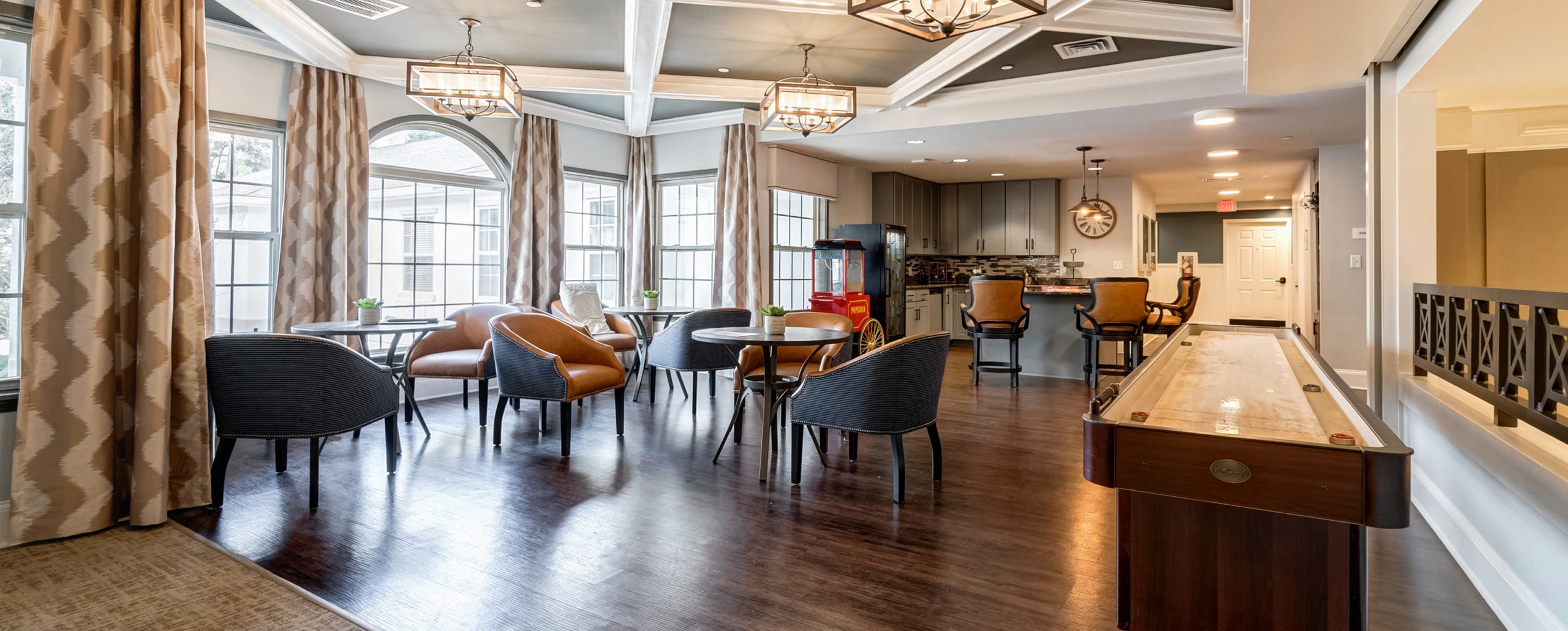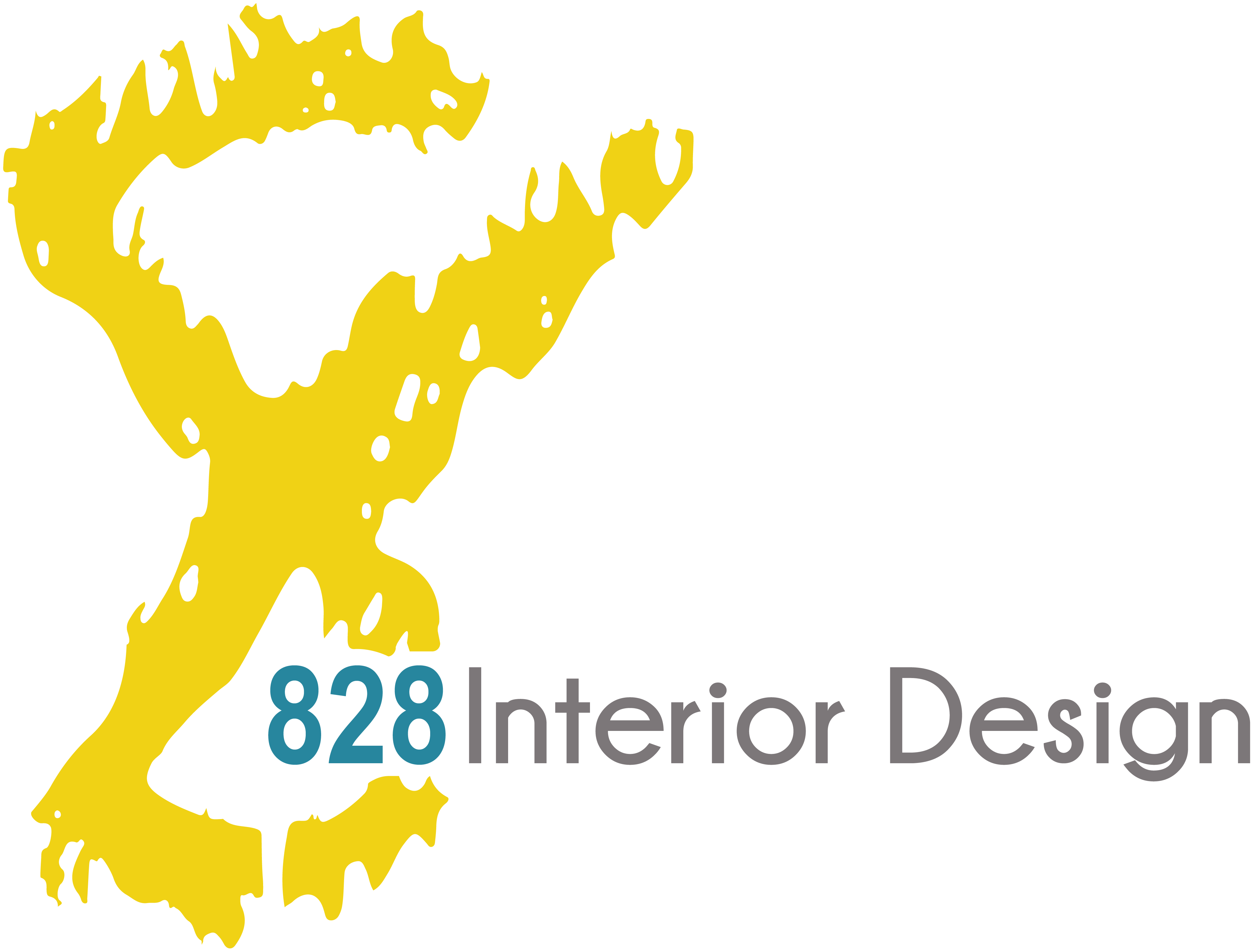What is Senior Living Interior Design?
Let’s start with the obvious: senior living interior design is interior design that is meant for senior living, including active adult living, independent living, assisted living, memory care, and even skilled nursing. It encompasses a varied type of projects, from new construction to renovations, and is mostly focused on the well-being of the residents who inhabit these communities.
Why Interior Design is Important in Senior Living
The senior living industry has a lot of demands that must be addressed through interior design. In addition to providing residents with places to sleep, eat, and socialize, senior living communities must be designed with state and federal life safety codes to give residents access to many forms of physical, mental, and medical care. Ideally, the design of a community makes accessing medical care simple and convenient to both the residents and the care team. While medical care and the safety of residents is of the utmost importance, interior design is also about much more than practical solutions. Senior living is a special industry because we are providing real people a place to live.
We take that last word very seriously—the spaces that we help design are meant to enhance life. This means promoting active socialization, establishing areas for comfort and leisure, and creating unique and sophisticated interiors that reflect the community’s regional context. Going further than providing simple solutions is what makes a senior living community provide an experience of excellence for everyone involved. It’s also important to note that each type of community has different needs. For instance, a memory care or support community will have very different design components than an independent living community. The needs of the residents dictate the function of interior design.
Independent Living
In Independent Living (IL), most residents can perform daily activities by themselves. For these communities, interior design is meant to enhance active life and promote spending time outdoors. Design can also be a little more innovative because there aren’t as many considerations to take into account; however, fall risks and aging friendly components are still incorporated.
Assisted Living
Assisted Living (AL) is where interior design requires industry knowledge and expertise. Because the residents need help with ADLs (activities of daily living), the design is meant more to support those functions both for residents and staff. However, this doesn’t mean that assisted living communities need to be sterile or boring. A good interior design team can find ways to brighten and give life to any community, regardless of resident abilities or frailties.
Memory Care or Memory Support
Memory Support (MC) communities are even more stringent than assisted living communities because in many cases, they have to protect residents from dangerous side effects of their memory loss. For example, some residents who suffer from dementia might wander throughout a community without consciously doing so. In this case, the interior design can have comforting patterns to guide residents to safety, and otherwise implement security measures to avoid having residents wander outside unsupervised.
Skilled Nursing
A Skilled Nursing (SN) resident often requires some form of specific medical treatment/needs, and while they receive round-the-clock assistance with ADLs, this often presents the unique opportunity to use interior design as a way of simplifying the relationship between nursing staff and residents.
CCRC or LPC
Traditionally known as Continuing Care Retirement Communities (CCRCs), the industry has moved more towards Life Planned Communities (LPCs) which are unique communities because they provide all types of care for residents. The goal for these communities is to house residents, no matter where they fall in the continuum of care. If a resident develops a need for assistance, this can be provided without moving the resident to another community. Interior design in these communities needs to be much more fluid and generalized to allow for many types of needs and services.
Rehabilitation – PT/OT
While these communities are more about short-term stays, the interior design can still affect how residents approach rehabilitation. Promoting safe movement can help with the rehabilitation process, and interior design can help with that endeavor.
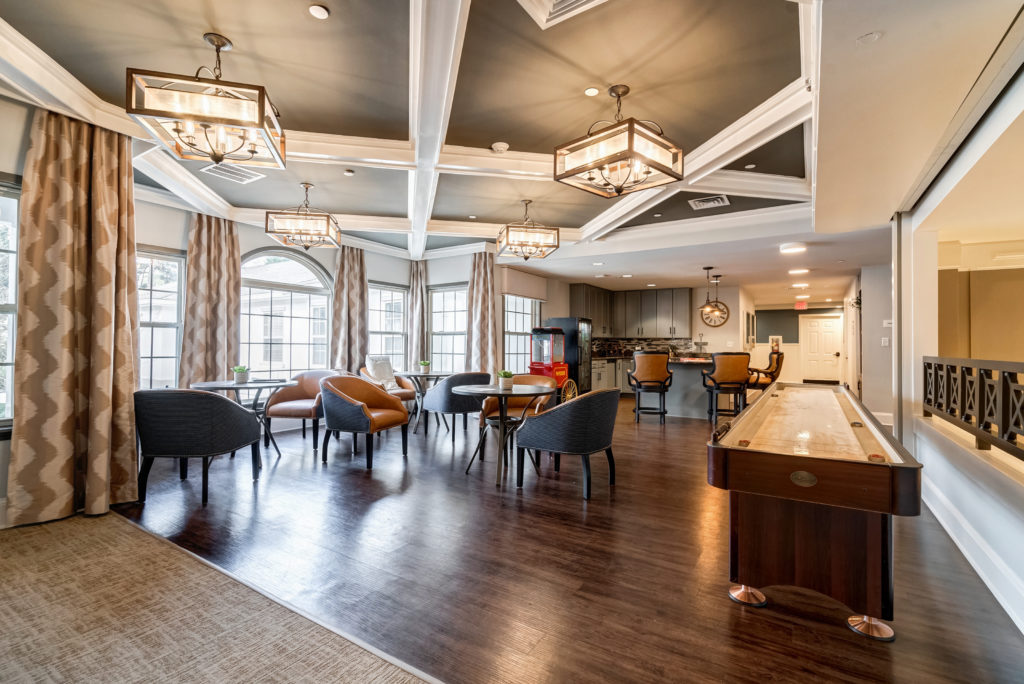
Types of Projects
For interior designers, it’s helpful to split projects into different categories. Below are the most common types of interior design projects relevant to senior living.
New Construction
These are the easiest and the most difficult projects! It’s simple because we can start from scratch and design the interior to match the function of the community, but it can be a challenge because there are so many options. As interior designers, our job is to narrow down your options so you can pick from the best possible choices that will enhance your community.
Expansion
Expansions are always fun projects because we are able to create something new that can tie into existing community buildings. These are typically stand-alone or connect to an existing building. The idea is to maintain the style worn by other parts of the community while still providing some innovation that makes the expansion interesting and worthwhile.
Renovation
If you’re looking for a face-lift, renovations are the perfect path. Without having to reinvent the wheel, interior designers can refresh your entire community (or specific areas) to bring it up to date. And it’s not just about a new paint job—we can lift up the floors and bring in new senior-specific furnishings to really enhance the look and functionality of the community.
Renderings
For those who are interested in a plan, interior designers will also offer 2D/3D renderings to help visualize the project. This is usually a part of an additional service offered by interior designers. In most instances they need to be drawn up for budget approval.
Procurement and FF&E
When the plan is ready to implement, the procurement process begins. This is where interior designers help by finding or procuring all the materials needed to finish the interior. This can include furniture, artwork for display, fixtures, accessories, and any equipment needed. The best part of working with an interior designer for procurement is that they often have a wealth of experience and relationships with the stocking dealers, so they know exactly what the procurement process is like and how long it will take.
In most cases, interior designers have gone through this process many times before, giving them the experience most communities look for. And once everything has been ordered, they can also manage the deliveries and make sure everything is installed in the right place. Interior designers who do procurement also maintain specifications, purchasing records and tight accounting of their budget, making sure to communicate with everyone involved if there are any changes. These systems are kept with great detail in order to provide stakeholders with budgets per room and an accurate inventory at the completion of the project.
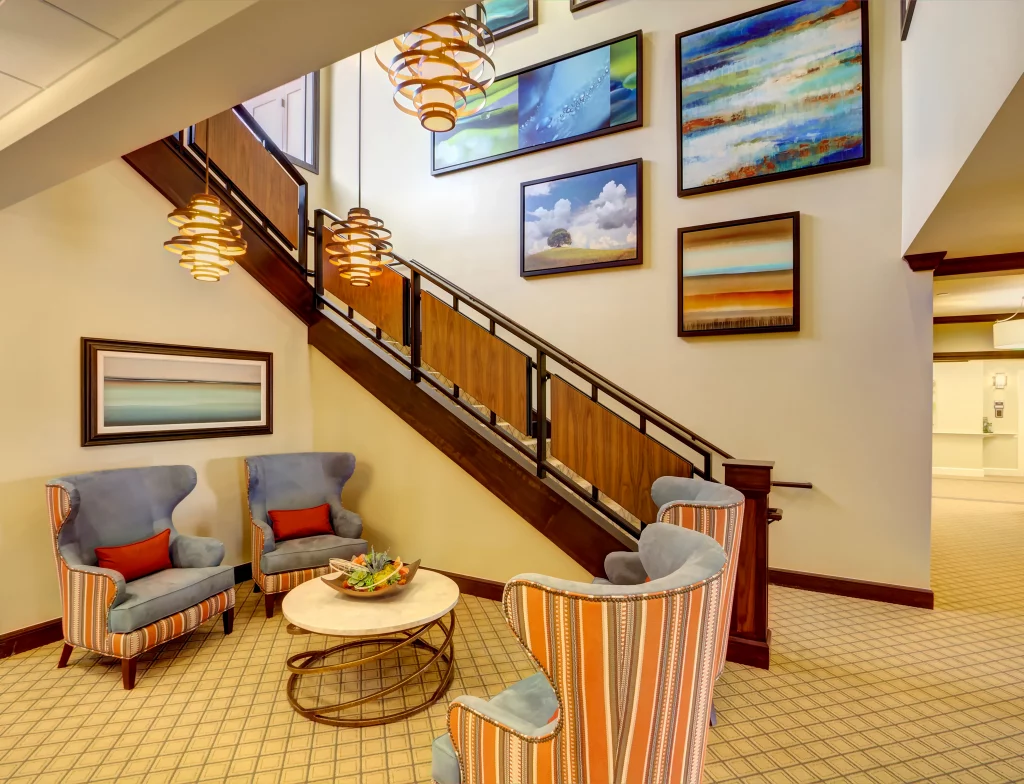
Senior Living Interior Design Trends
Senior living is an industry that is constantly evolving and changing for the better. Lately, the focus on programming and designing innovative environments that support the lives of the residents is one of the best ways to bring meaning to a community. In the end, it’s all about enhancing the residents’ lives. Below are some of the most recent senior living interior design trends.
Natural Light
Design trends in general have veered more toward natural light in recent years. In senior living, natural light is not just a visual aesthetic—it helps residents who may not be able to spend a lot of time outdoors get a good amount of Vitamin D. Natural lighting also helps improve a resident’s emotional and mental states and gives the community a comforting atmosphere. Studies show that natural light is also important to regulate sleep patterns. For a community, maximizing daylight can also reduce costs. Natural light is not just a trend—it’s a measurable improvement in the way senior living communities are built.
Technology
As technology advances and new tools are built that can help improve senior living communities, interior designers do their best to implement these new tools in their design. From simple technologies of adding charging stations into furnishings and walls/cabinets, to adding sensors built into the piece of furniture. This helps create not only new accessibilities and convenience but creates safe environments. Integrated LED advancements in lighting and sound also gives interior designers new options to create environments not with just dimming the lights but setting controls and moods within a space.
Rethinking the Room
There has been a recent push to really think about the impact of private vs semi-private rooms in senior living. Depending on the length of stay, being alone or with someone else can really affect the resident experience. The design of the space is critical to help with privacy and dignity.
Another trend regarding resident rooms is to rework the configuration. A simple bed and table does not feel very inviting. This is why senior living designers have developed creative layouts and teamed with industry vendors for the use of modular components so that each room may have the opportunity to be personalized.
Spotlight on Local Art
Senior living communities are located in specific areas, and artwork can be a simple way to showcase local artists, regional context, and historical heritage. Art can include paintings on the walls, but can also encompass sculptures, handcrafted pieces, photography, and much more.
Senior Living Interior Design Cost
Cost for interior design projects can vary depending on the type of project. Of course, projects can be personalized for specific budgets, so if you have a budget in mind, be sure to reach out and we’ll help you develop the best strategy to achieve your vision while staying under budget.
Here are some standard budgets for different types of interior design projects:
- New Construction: 10-100M+
- Expansion: 5-10M+
- Renovations: 100K-5M ($100-250sf)
- IL Apartment Flip: 100K-500K
- AL/MC/SN Unit Flip: 10-25K
These are wide ranges because of all the variables to take into account. Here are some typical costs for individual items to plan around:
- Typical Dining Chair: $350-$650ea
- Typical Dining Table: $450-$750ea
- Typical Lounge Chair: $850-$1500ea
- Typical Sofa: $1000-2000ea
- Typical Side Tables: $450-1000ea
- Typical Coffee Tables: $650-1200ea
- Typical Consoles: $1000-2500ea
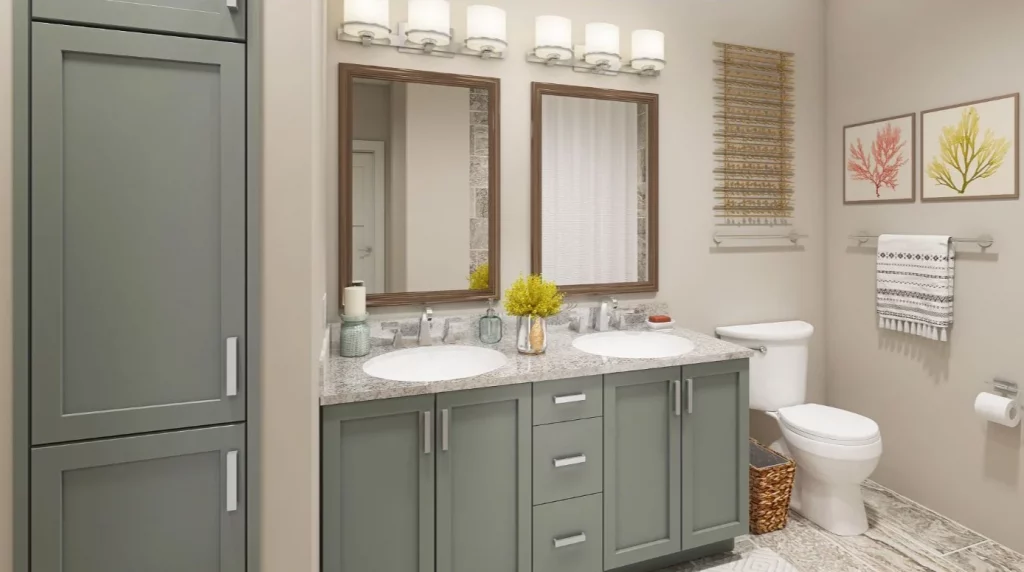
Our Work
In order to get a better understanding of senior living interior design projects, you can take a look at some of our work and the projects we have completed in recent years. We’ve navigated all kinds of obstacles and overcome many challenges to bring our clients’ vision to fruition.
Querencia at Barton Creek
Independent Living, Memory Support — Austin, TX
This Life Planned Community renovation project is snug in the middle of the winding Texas hill country right in our 828 backyard! With construction starting in the summer of 2021 our team has overcome several obstacles with the ever-changing market and is excited to get the project off the ground.
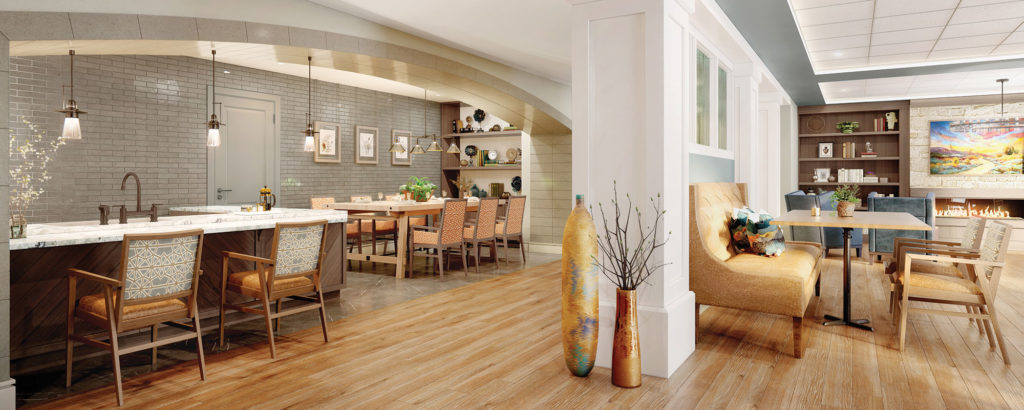
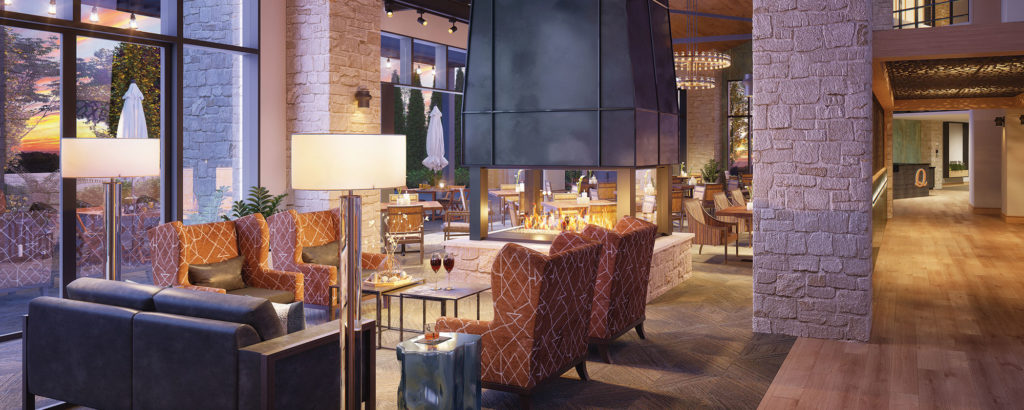
Waterman Village
Independent Living, Memory Support — Mount Dora, FL
This Life Planned Community Expansion project is nestled in the middle of Lake County and is projected to expand around their lakefront property with construction having started in 2020. Sixty new Independent Living Casita Homes, 16-Plex’s with a 4-story resident living building and common space will wrap around the lake with walking paths. Adjacent to the lake will stand a new Memory Support building with 26 private rooms.
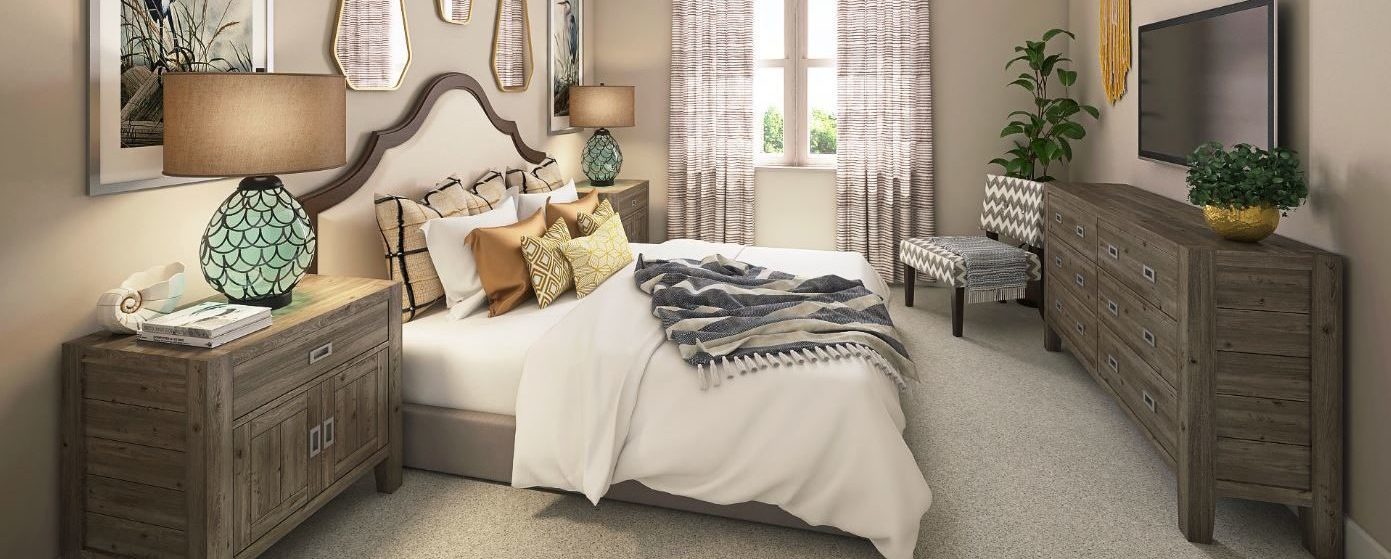
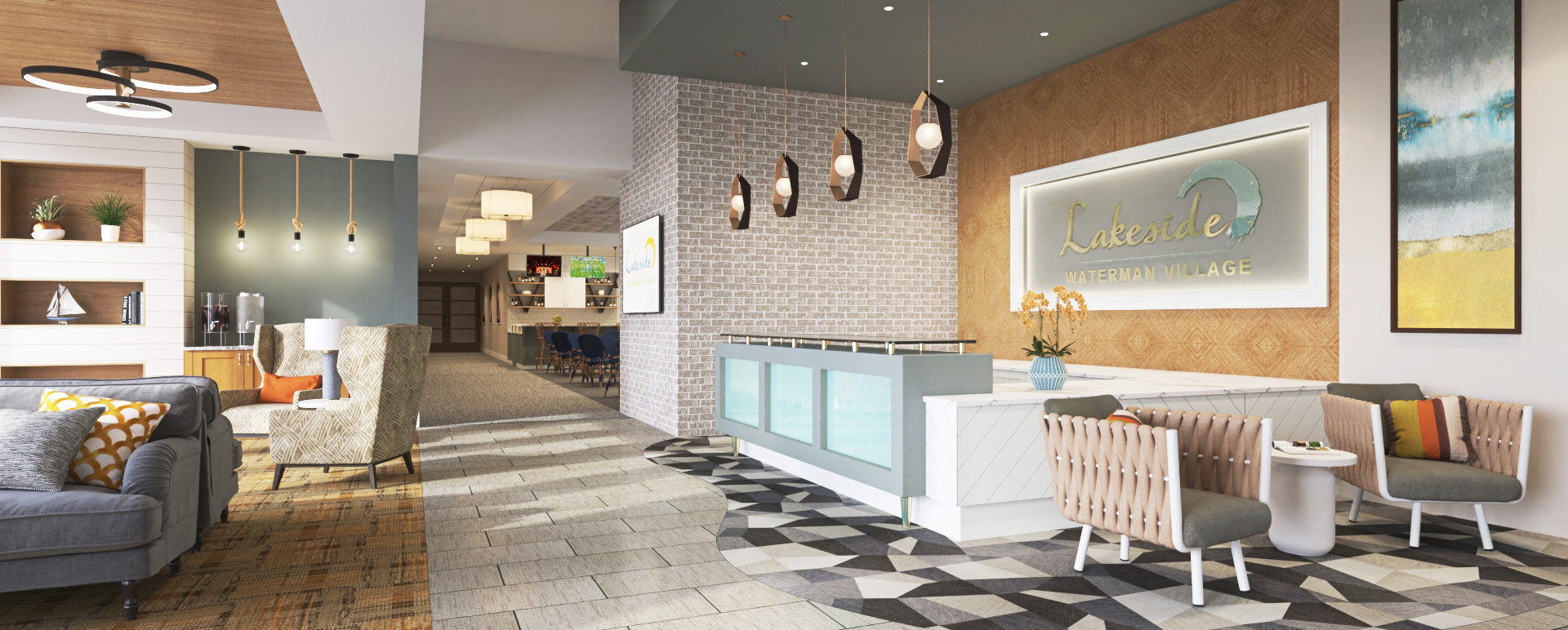
The Phoenix at Johnson Ferry
Assisted Living, Memory Support — Marietta, GA
While we saw residents filled with life and very active in their daily activities, the space they had did not reflect their lifestyle. As we walked the community, we immediately wanted to create purposeful areas to help support their way of life.
